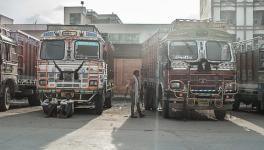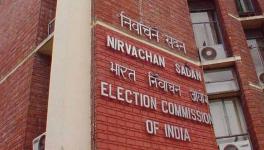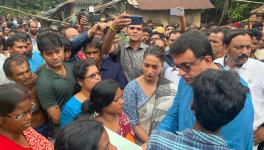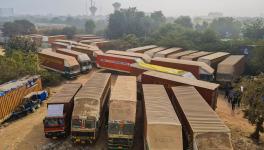The Story of WASH in Small Towns in India
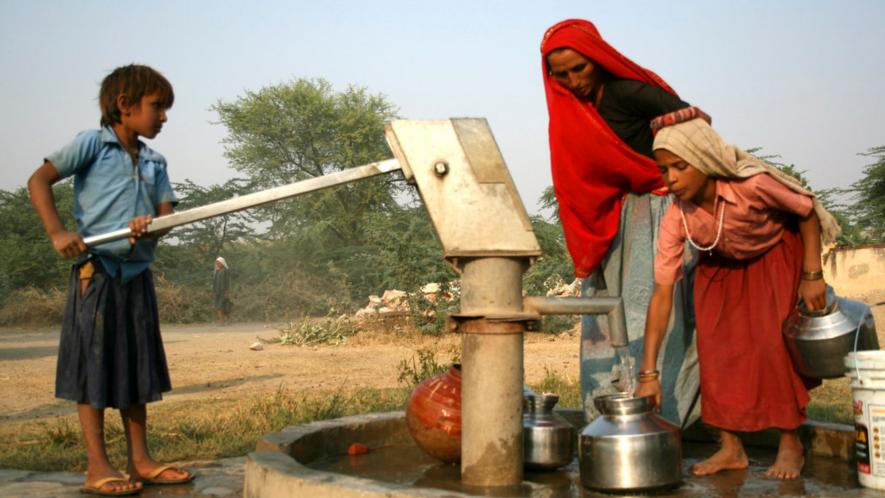
Representational Image. Image Courtesy: Flickr
India is home to around 17.76% of the world's population but has only 4% of the world's freshwater resources. It is estimated that about 200,000 people die every year due to inadequate water, sanitation and hygiene. In 2016, the per-person disease burden due to unsafe water and sanitation was 40 times higher in India than in China and 12 times higher than in Sri Lanka.
With the country generating vast amounts of wastewater annually, mismanagement of wastewater, lack of liquid and solid waste management, poor sanitation conditions and poor hygiene habits have contributed to a significant portion of the population suffering from waterborne diseases.
The small towns are more vulnerable than others, marred with incapacities and poor onus. Most of the utilities pertaining to WASH (water, sanitation and hygiene) are dealt with by parastatals in small towns. Besides, the big-ticket programmes announced by the Central government mainly cater to the needs of large cities and metropolis.
Since the Census of India of 1981, the definitions of different settlement types have been largely unchanged, even though the emergence of census towns challenges current measures of urbanisation.
India has over 8,000 municipalities and cities with about 470 million residents. Only about 600 have a population above 80,000. The remaining 7,400 small municipalities (As per Indian Census 2011) are facing or will face, water scarcity soon. Despite possessing surface water resources, they depend highly on groundwater resources for day-to-day survival. Their challenge is to fulfil the demand through the existing but depleting resources. The municipalities need affordable and robust systems and unconventional solutions involving recycling, recharge and reuse of water, etc.
Per a report from the Central Pollution Control Board of India (CPCB), sanitation services have largely been ignored, and only 19% of the sewage generated is treated. While wastewater infrastructure is gradually improving, it has focussed on centralised approaches in large cities, leaving many small pockets unserved. This can be attributed to the gigantic size of the nation's population.
Deficient Capacities
Institutionally, the small municipalities are poorly equipped for the responsibilities of the water supply and sanitation services and for regulating institutional and financial matters. 76% of census towns and 52% of statutory towns do not have a master plan. These towns have rudimentary capacities - their personnel (mainly civil engineers) lack relevant experience in institutional reform and water governance, including decentralisation and service delivery options and a customer-facing orientation to services and delivery. The weak leadership and lack of harmonisation in the government's efforts lead to disordered and contract-related implementation.
The municipal financing for WASH falls into two broad categories: own-source revenues (ULB) and intergovernmental fiscal transfers (state and central). Indian municipalities generate own-source revenues mostly through property taxes. While municipalities in India assess the tax amount based on location, property size and other factors, they do not have complete control over the tax rates, as the power to determine property tax slabs rests with the state government. Other own-source revenue streams may include market fees or licensing fees.
The primary mechanism for intergovernmental transfers (IGFT) is the Finance Commission, which allocates funding from the Central government to states based on population, and state governments then distribute this funding to municipalities. Finance Commission funds include both tied and untied transfers. Currently, of the total 15th Finance Commission (2021–26) funding recommended for municipalities with populations less than one million, 30% is allocated for drinking water, 30% for sanitation, and the remainder is flexible.
India has an IGFT of 0.45% of GDP, the lowest amongst developing nations like Mexico (1.6%) or South Africa (2.6%). This disparity puts undue pressure on smaller municipalities and municipal councils to generate revenue, for which they often are ill-prepared. The grants are divided into basic and performance-linked categories. The basic grant, which is 80% of the total, provides unconditional support to municipalities to provide civic services, including water and sanitation. Municipalities scoring well on performance criteria, including increases in own-source revenue and water and sanitation service benchmarks, can access additional performance-linked grants.
Unlike larger towns that might have a percentage of their population connected to centralised sewage systems linked to treatment plants, most smaller towns in India lack sewer infrastructure or treatment facilities. Consequently, the absence of treatment or disposal options leads to the improper discharge of faecal sludge and wastewater into the environment.
According to a report from CPCB in 2021, a substantial gap exists in treatment capacity within different city classes based on population size. In cities classified as class I with a population exceeding 10 lakhs, the treatment capacity gap is approximately 67%. Similarly, in class II towns with a population range of 50,000 to 1 lakh, the treatment capacity gap is notably higher, at around 95%, highlighting a significant disparity.
In conclusion, addressing the pressing issues concerning water and sanitation services in small towns in India and South Asia assumes paramount significance. By grasping the challenges they confront, recognising the criticality of accessible water, and exploring potential avenues for improvement, we can pave the way for healthier, more sustainable, and flourishing communities. Equitable clean and safe water, with adequate sanitation facilities, transcends mere necessity—it constitutes a fundamental right. But the current state of affairs paints a sorry picture when it comes to meeting the SDG 6 targets.
By investing in infrastructure, fostering community engagement, adopting cutting-edge technologies, and championing responsible water usage, small towns can surmount obstacles and revolutionise their water and sanitation services to cater adeptly to the needs of their burgeoning populations. Small towns play a pivotal role in the holistic development of nations. By guaranteeing access to basic services such as water and sanitation, we empower these towns to contribute even more potently to economic progress, environmental sustainability, and social well-being.
Tikender Singh Panwar is the former Deputy Mayor of Shimla, Himachal Pradesh. Rwitwik Sinha is a sanitation engineer working with BORDA (Bremen Overseas Research and Development Association). The views are personal.
Get the latest reports & analysis with people's perspective on Protests, movements & deep analytical videos, discussions of the current affairs in your Telegram app. Subscribe to NewsClick's Telegram channel & get Real-Time updates on stories, as they get published on our website.












